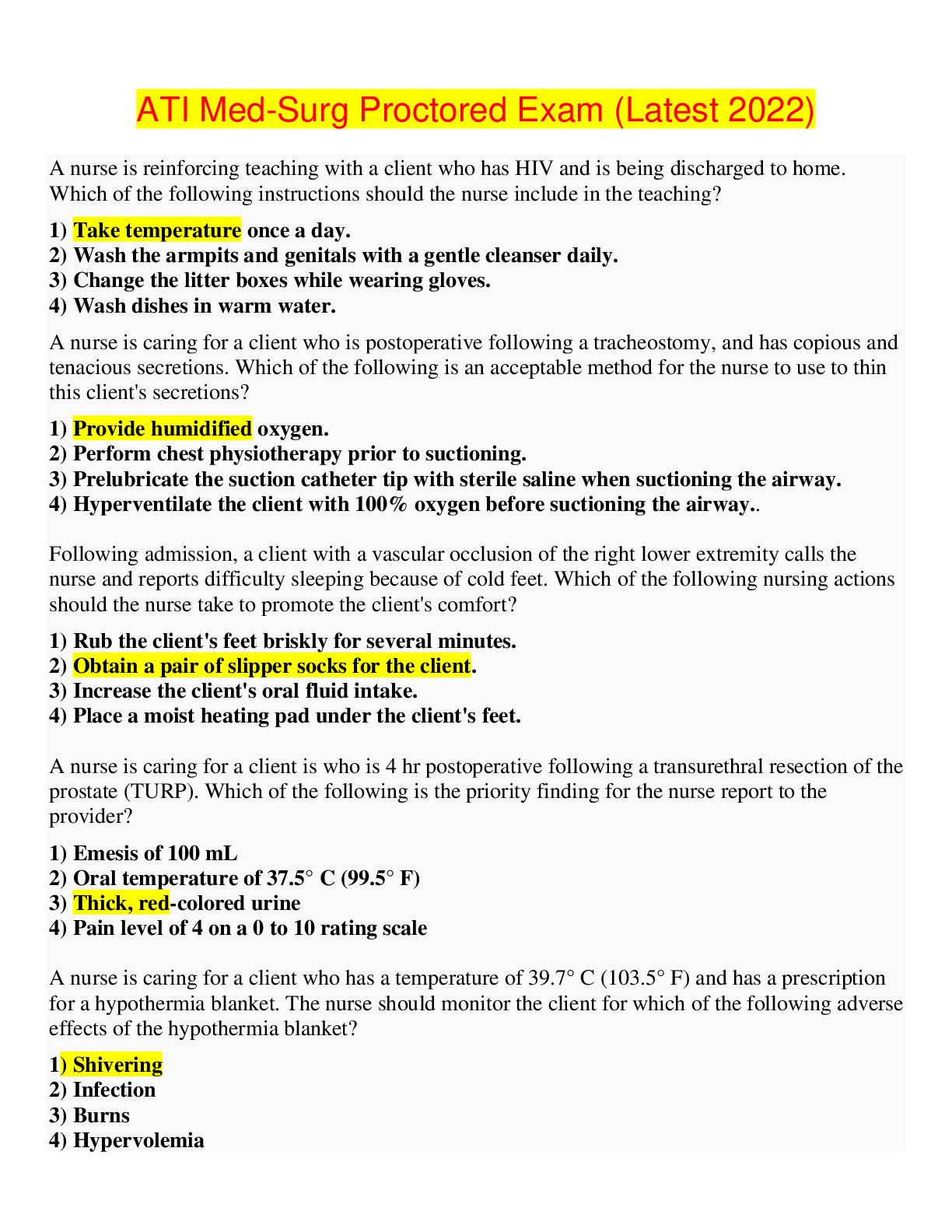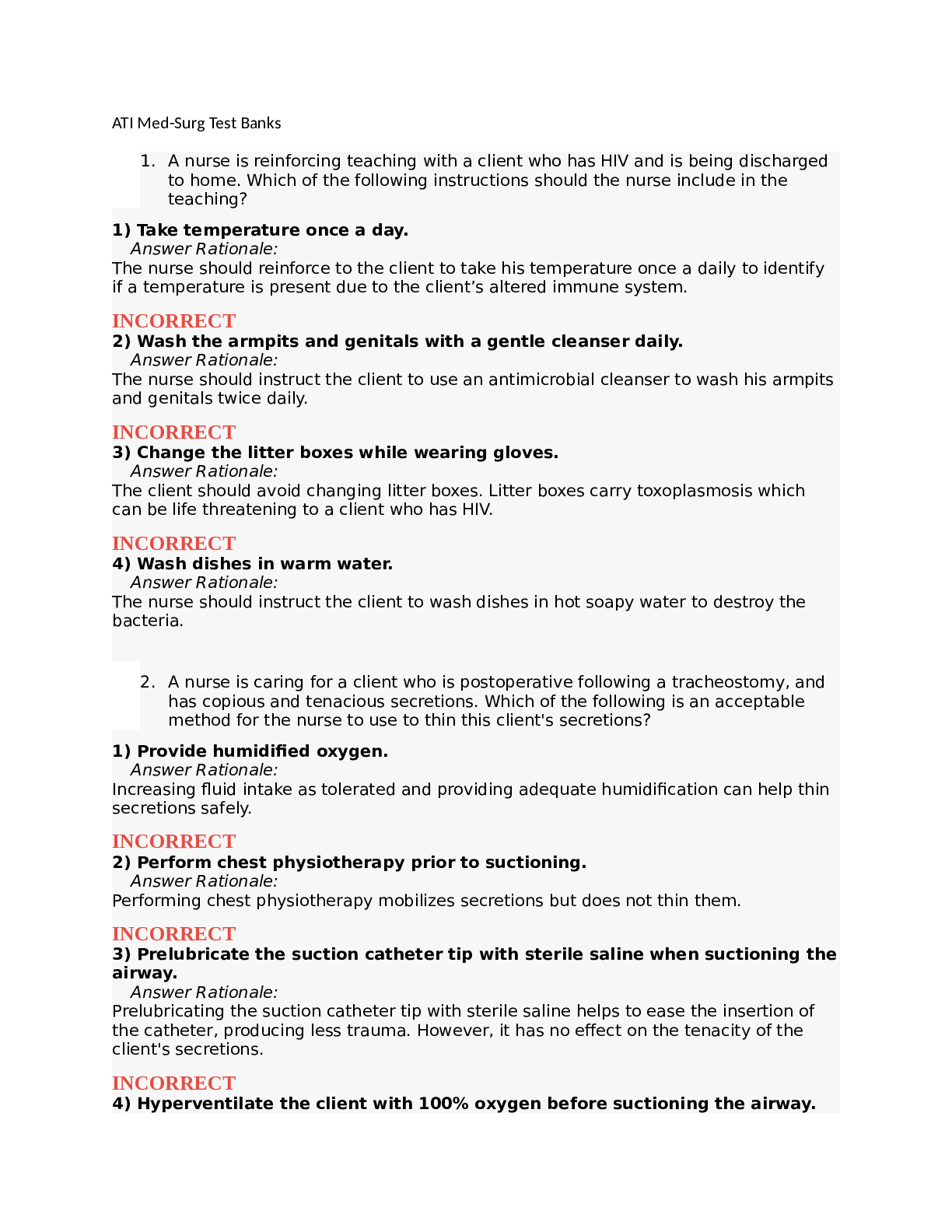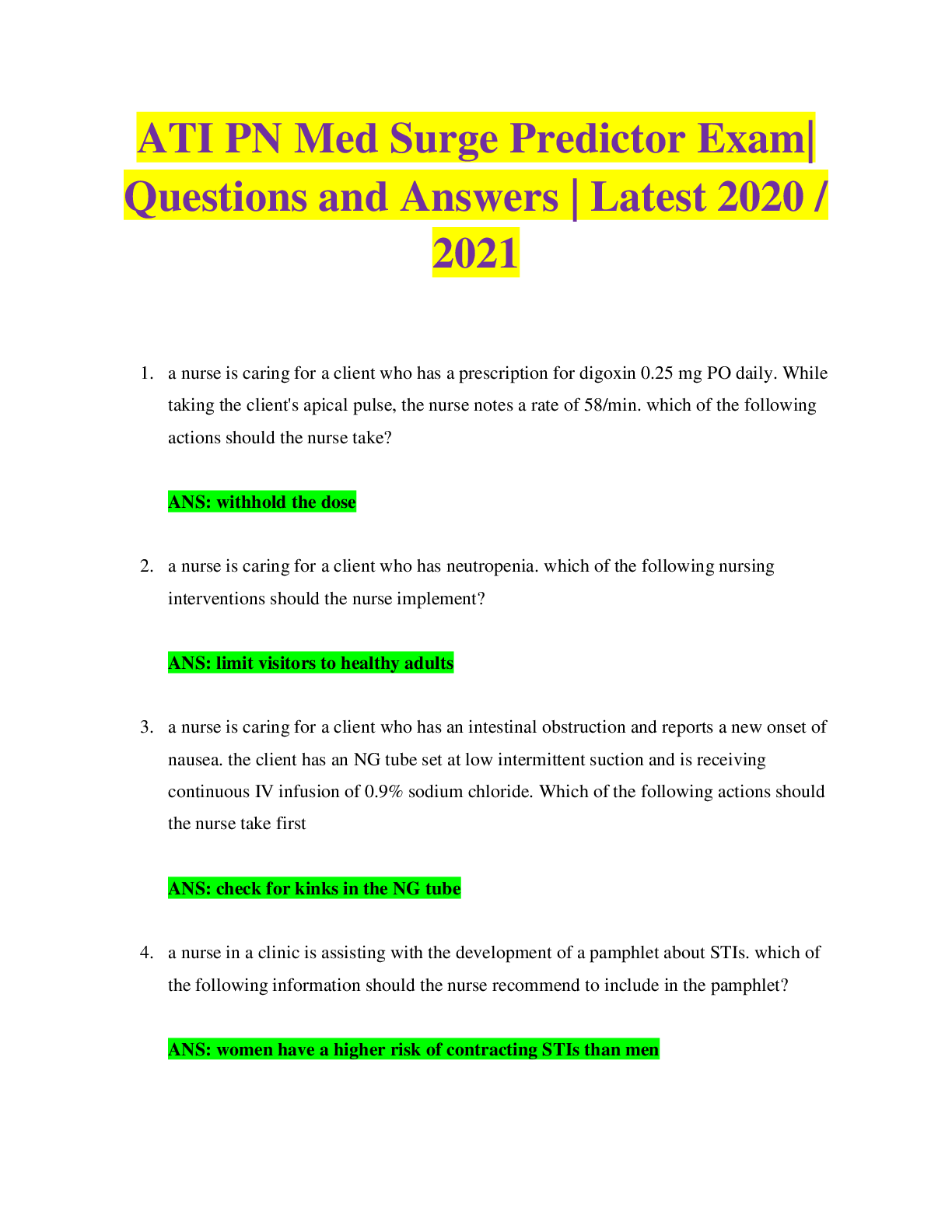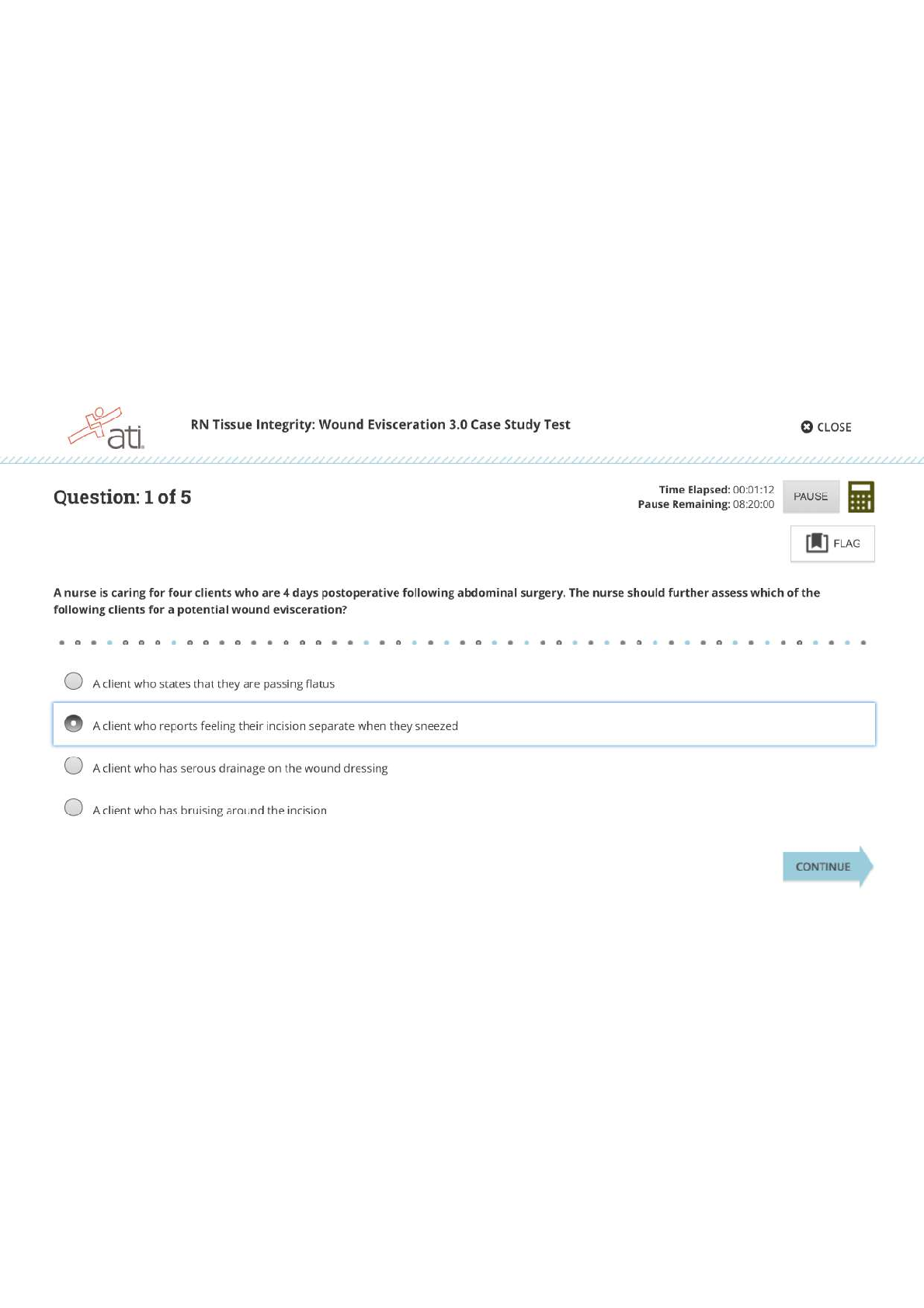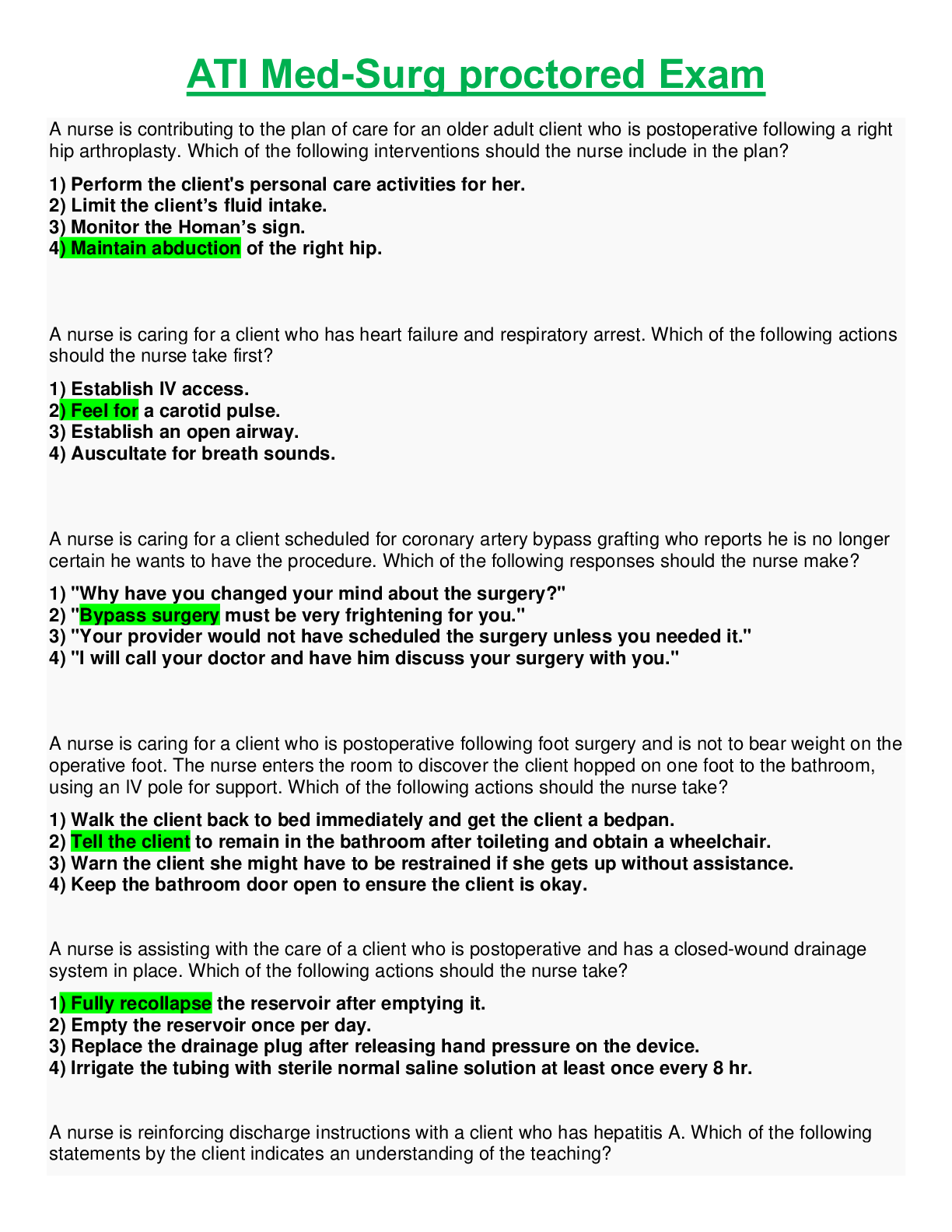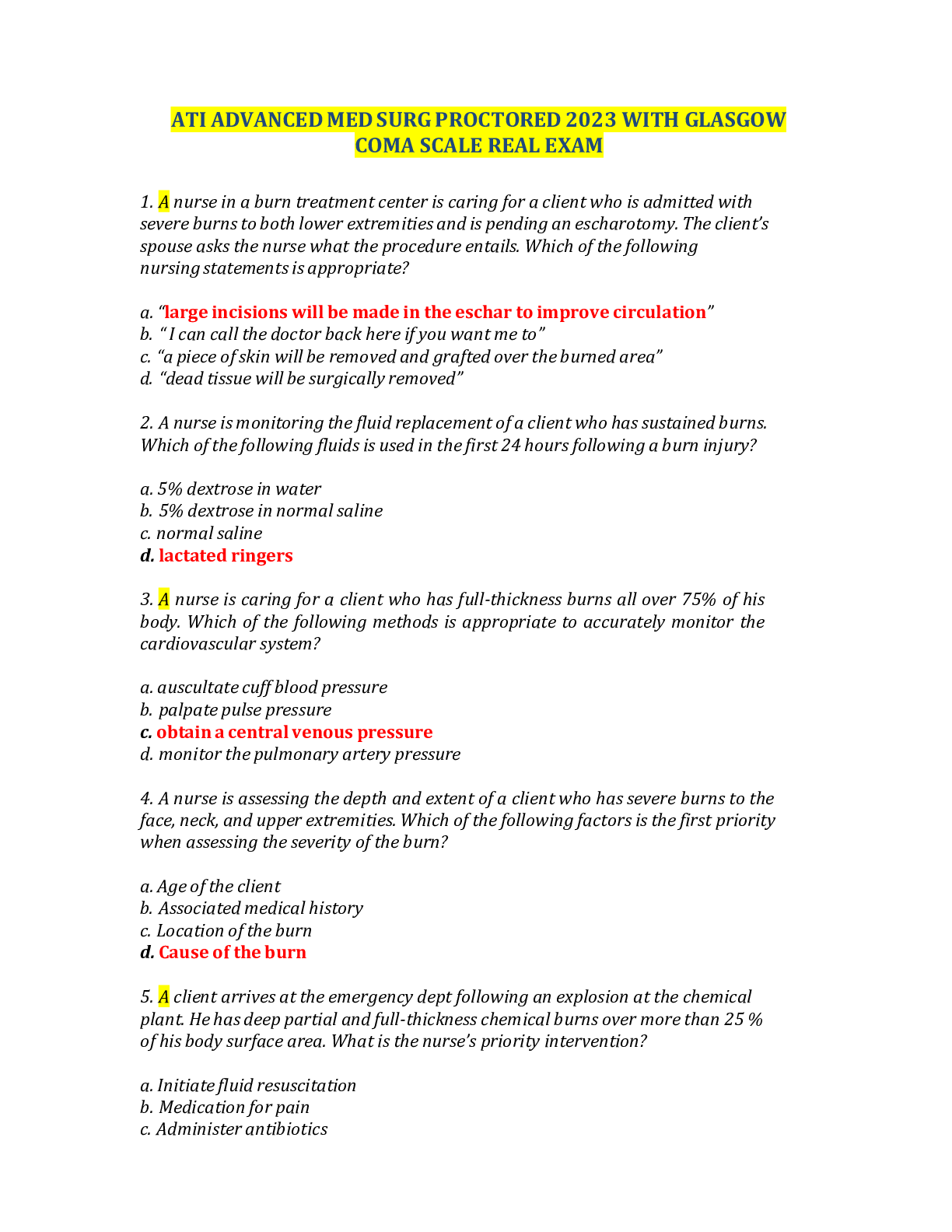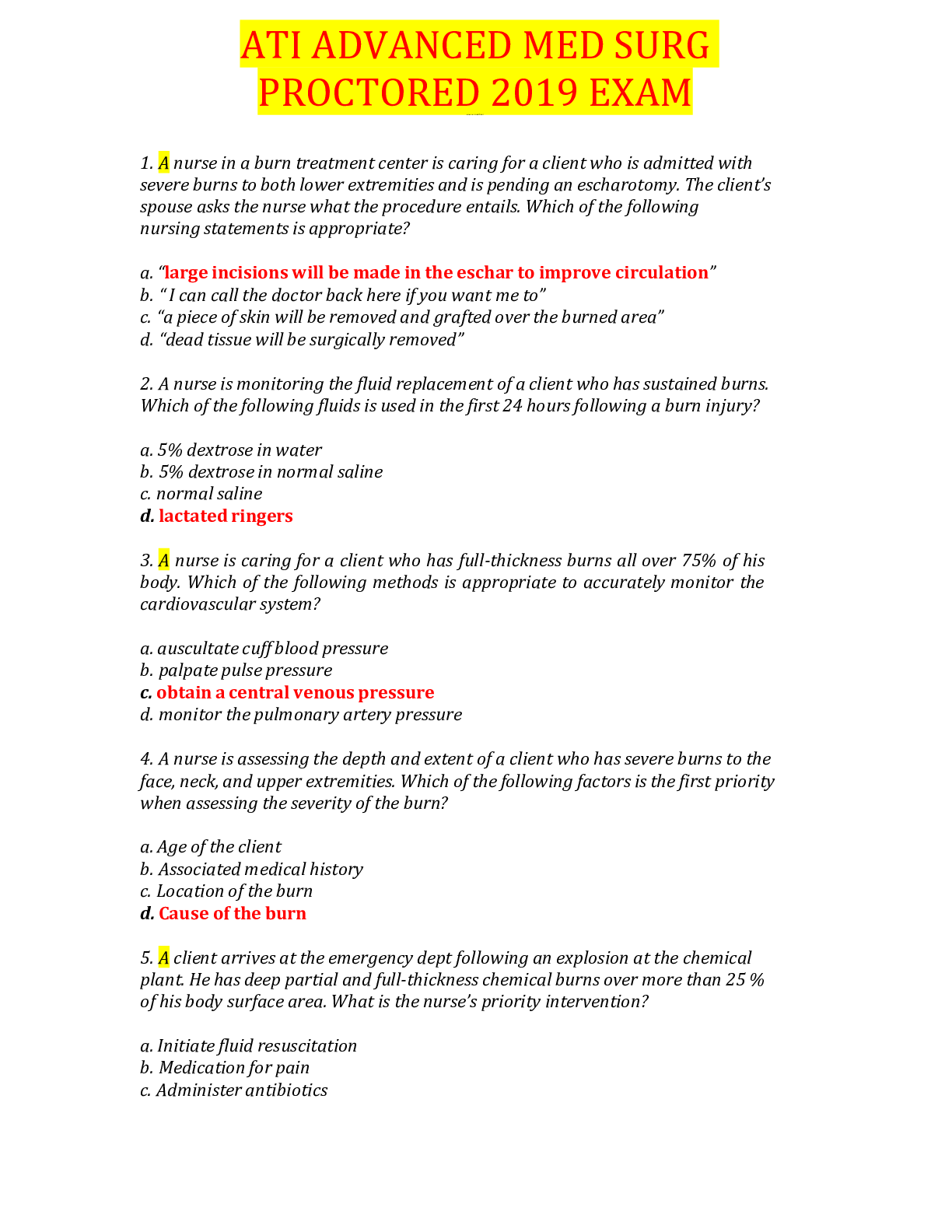Anatomy and Physiology - A&P 2 > ATI MEDICAL SURGICAL > BASIC PHARMACOLOGY FOR NURSES 17TH EDITION BY WILLIHNGANZ (All)
BASIC PHARMACOLOGY FOR NURSES 17TH EDITION BY WILLIHNGANZ
Document Content and Description Below
The nurse assesses hives in a patient started on a new medication. What is the nurse’s priority action? a. Notify physician of allergic reaction. b. Notify physician of idiosyncratic reaction. c... . Notify physician of potential teratogenicity. d. Notify physician of potential tolerance. ANS: A An allergic reaction is indicative of hypersensitivity and manifests with hives and/or urticaria, which are easily identified. An idiosyncratic reaction occurs when something unusual or abnormal happens when a drug is first administered. A teratogenic reaction refers to the occurrence of birth defects related to administration of the drug. Tolerance refers to the body’s requirement for increasing dosages to achieve the same effects that a lower dose once did. DIF: Cognitive Level: Application REF: Page 17 OBJ: 4 TOP: Nursing Process Step: Assessment MSC: NCLEX Client Needs Category: Physiological Integrity NOT: CONCEPT(S): Clinical Judgment; Safety 2. The nurse administers an initial dose of a steroid to a patient with asthma. Thirty minutes after administration, the nurse finds the patient agitated and stating that “everyone is out to get me.” What is the term for this unusual reaction a. Desired action b. Adverse effect c. Idiosyncratic reaction d. Allergic reaction ANS: C Idiosyncratic reactions are unusual, abnormal reactions that occur when a drug is first administered. Patients typically exhibit an overresponsiveness to a medication related to diminished metabolism. These reactions are believed to be related to genetic enzyme deficiencies. Desired actions are expected responses to a medication. Adverse effects are reactions that occur in another system of the body; they are usually predictable. Allergic reactions appear after repeated medication dosages. DIF: Cognitive Level: Knowledge REF: Page 18 OBJ: 4 TOP: Nursing Process Step: Evaluation MSC: NCLEX Client Needs Category: Physiological Integrity NOT: CONCEPT(S): Patient Education; Clinical Judgment; Caregiving; Safety; Sensory Perception 3. Which is the best description of when drug interactions occur? a. On administration of toxic dosages of a drug b. On an increase in the pharmacodynamics of bound drugs c. On the alteration of the effect of one drug by another drug d. On increase of drug excretion This study source was downloaded by 100000840275362 from CourseHero.com on 07-09-2022 20:10:17 GMT -05:00 https://www.coursehero.com/file/81438734/BASIC-PHARMACOLOGY-FOR-NURSES-17TH-EDITION-BY-WILLIHNGANZpdf/ Basic Pharmacology for Nurses 17th Edition Willihnganz Test Bank U S N T O ANS: C Drug interactions may be characterized by an increase or decrease in the effectiveness of one or both of the drugs. Toxicity of one drug may or may not affect the metabolism of another one. Drug interactions may result from either increased or decreased pharmacodynamics. Drug interactions may result from either increased or decreased excretion. DIF: Cognitive Level: Comprehension REF: Page 18 OBJ: 5 TOP: Nursing Process Step: Assessment MSC: NCLEX Client Needs Category: Physiological Integrity NOT: CONCEPT(S): Safety; Patient Education; Clinical Judgment 4. What occurs when two drugs compete for the same receptor site, resulting in increased activity of the first drug? a. Desired action b. Synergistic effect c. Carcinogenicity d. Displacement ANS: D The displacement of the first drug from receptor sites by a second drug increases the amount of the first drug because more unbound drug is available. An expected response of a drug is the desired action. A synergistic effect is the effect of two drugs being greater than the effect of each chemical individually or the sum of the individual effects. Carcinogenicity is the ability of a drug to cause cells to mutate and become cancerous. DIF: Cognitive Level: Comprehension REF: Page 19 OBJ: 6 TOP: Nursing Process Step: Implementation MSC: NCLEX Client Needs CNategRory:IPhyGsiolBog.icCal InMtegrity NOT: CONCEPT(S): Safety; Patient Education 5. What do drug blood levels indicate? a. They confirm if the patient is taking a generic form of a drug. b. They determine if the patient has sufficient body fat to metabolize the drug. c. They verify if the patient is taking someone else’s medications. d. They determine if the amount of drug in the bod [Show More]
Last updated: 1 year ago
Preview 1 out of 8 pages
Instant download

Instant download
Reviews( 0 )
Document information
Connected school, study & course
About the document
Uploaded On
Jul 10, 2022
Number of pages
8
Written in
Additional information
This document has been written for:
Uploaded
Jul 10, 2022
Downloads
0
Views
35

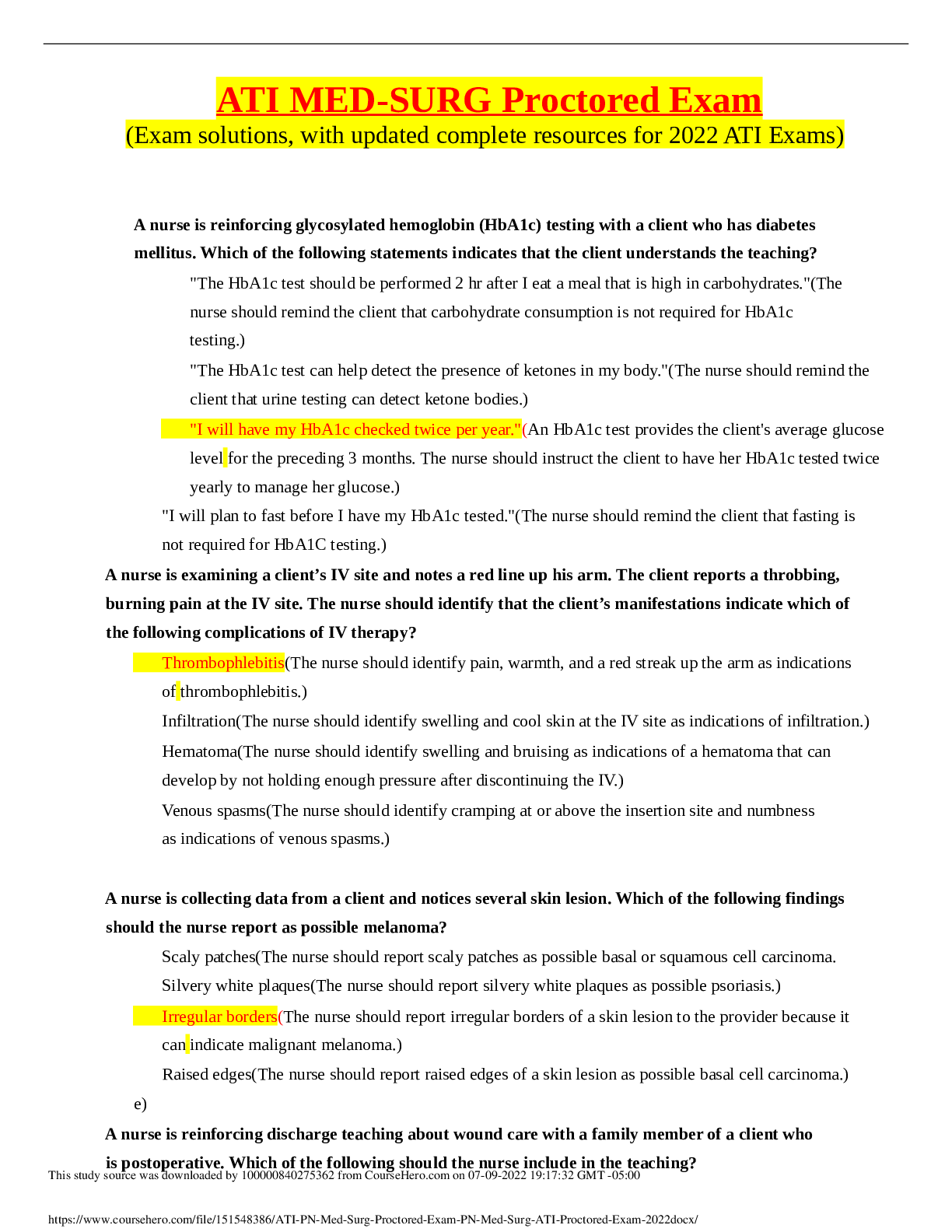
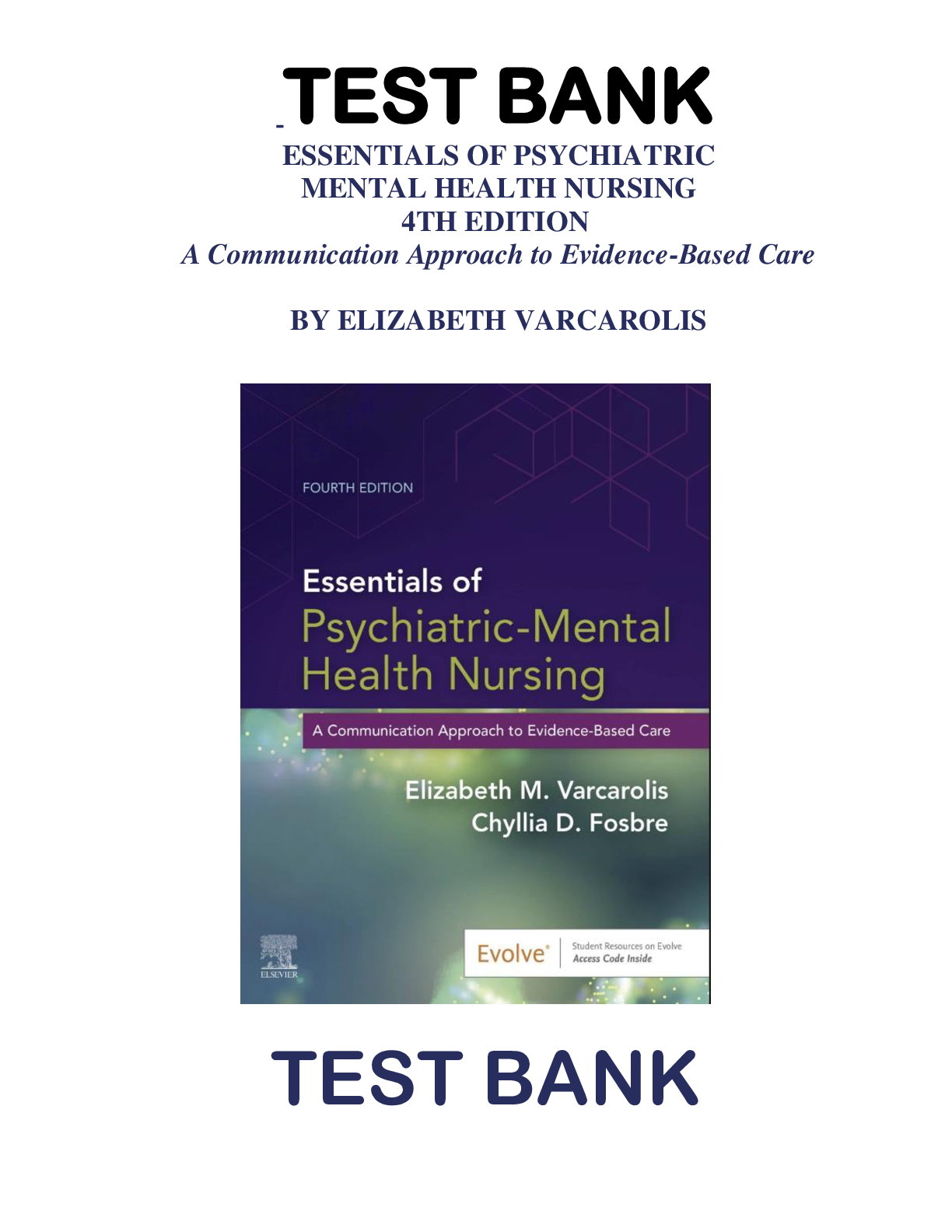
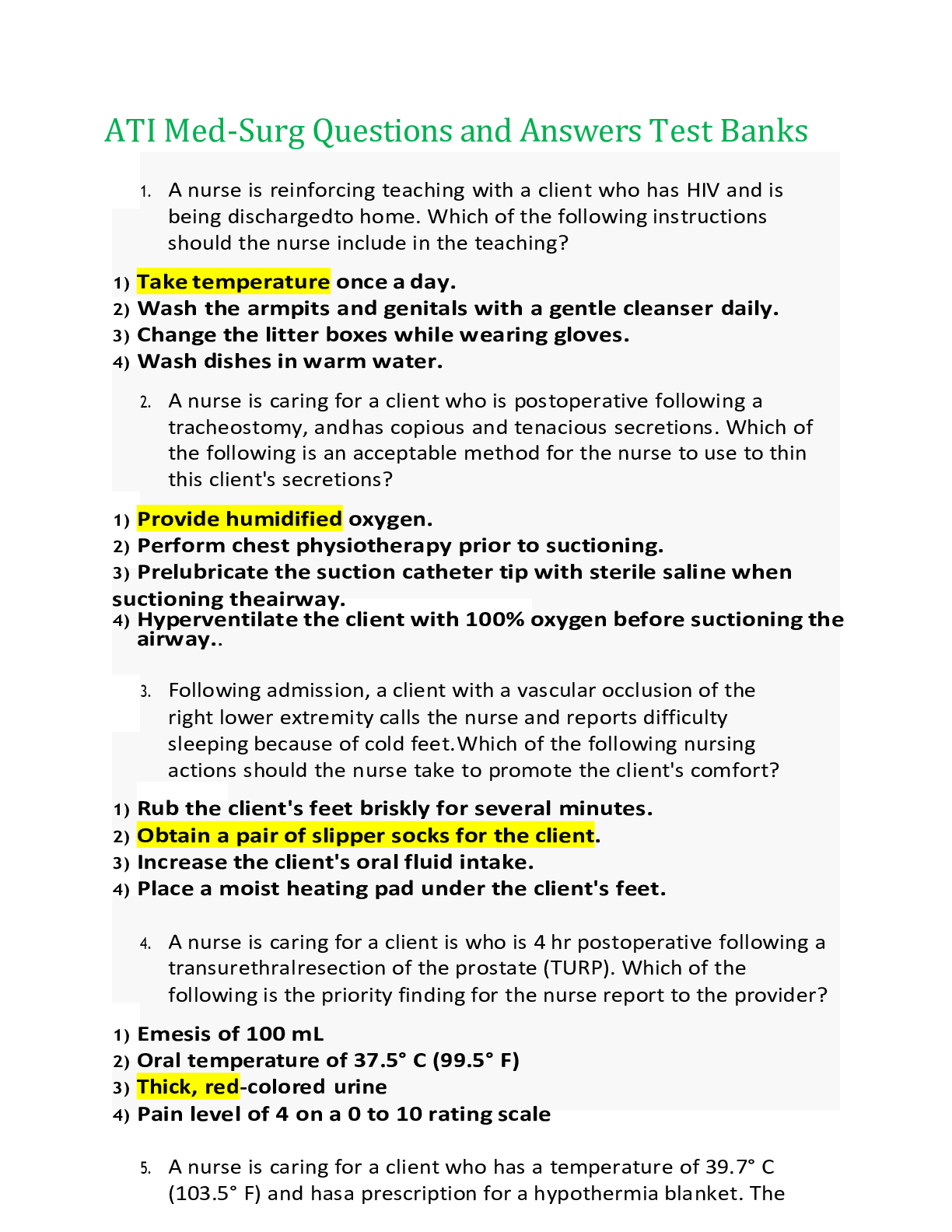
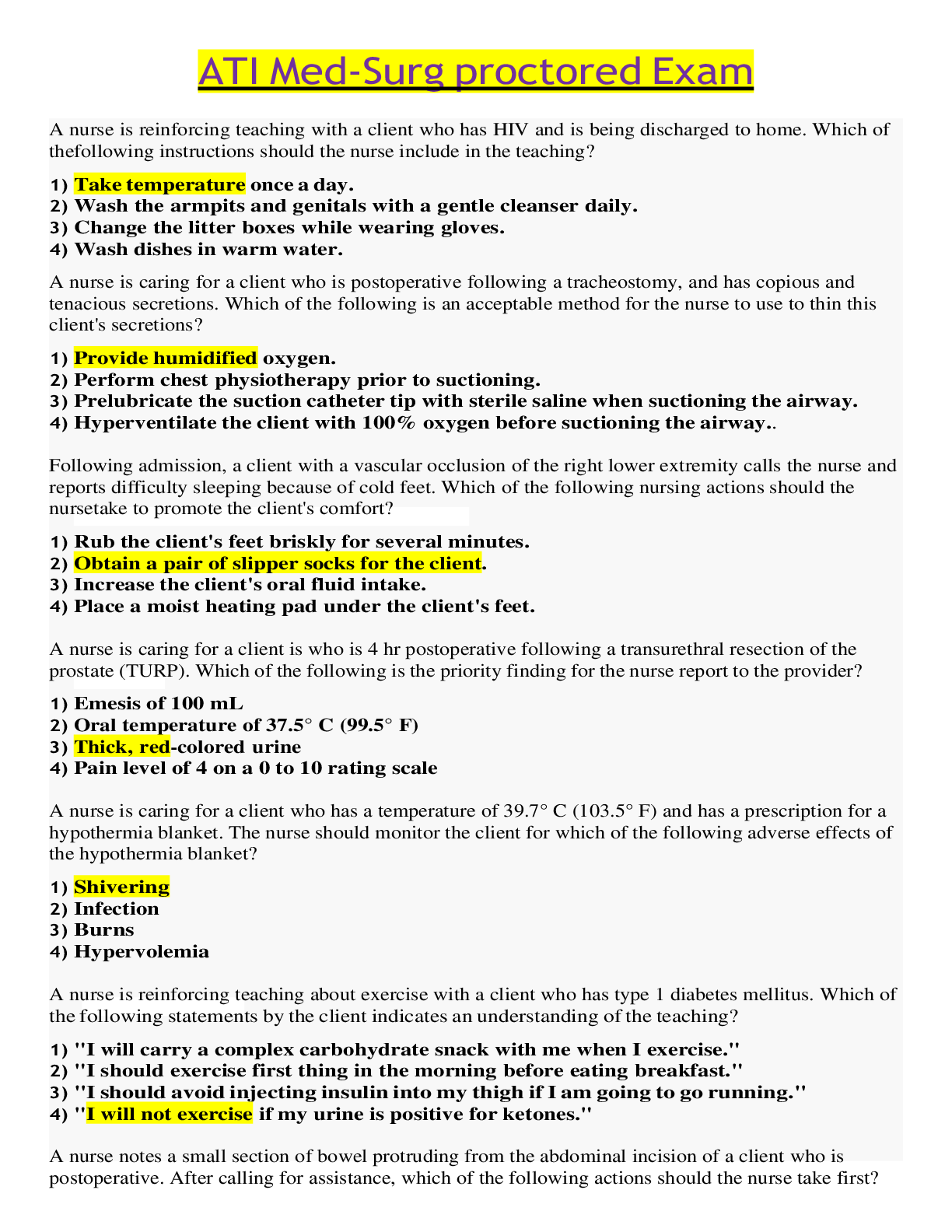
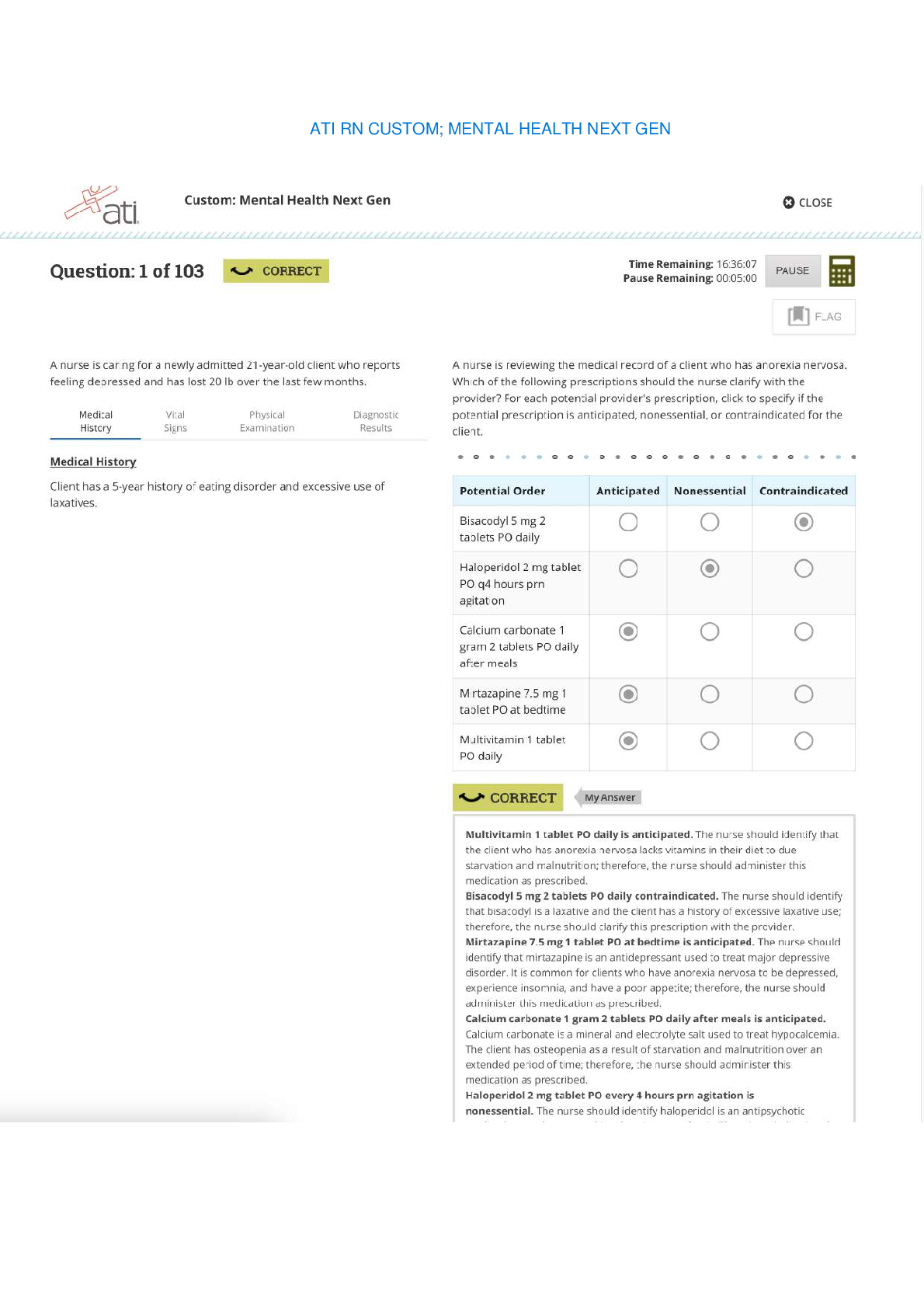
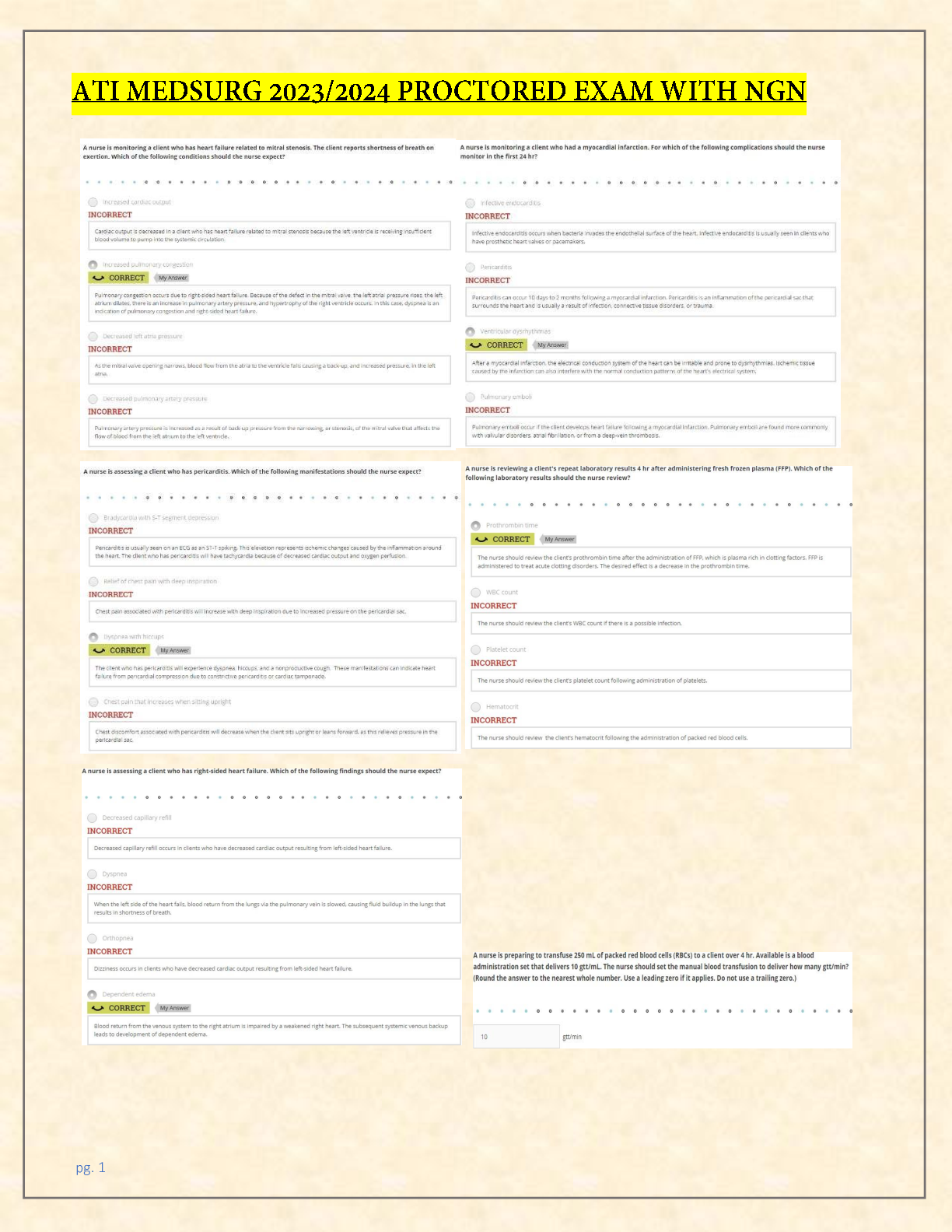
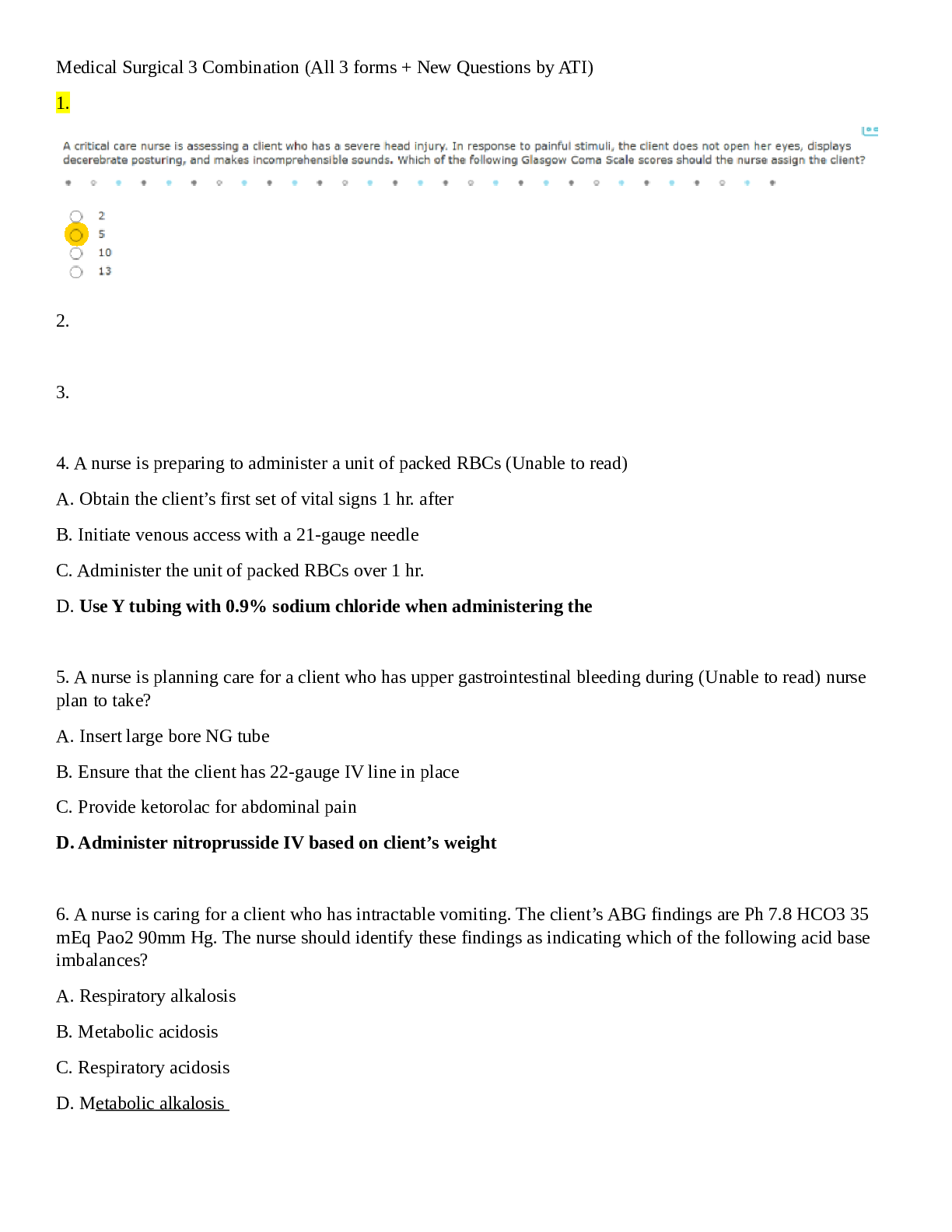
 – Chamberlain College of Nursing.png)
